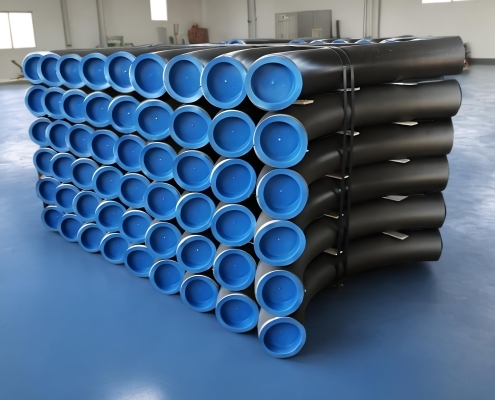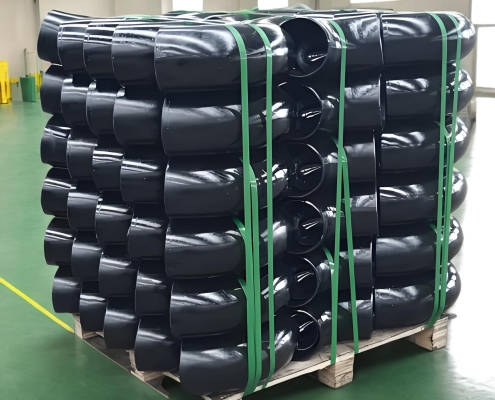Future Energy Steel erbjuder hög kvalitet Buttsvets beslag som överensstämmer med ASME B16.9-standarder, vilket säkerställer hållbarhet och tillförlitlighet. Våra stumsvetsarmatur används i stor utsträckning inom industrier som olja och gas, kemi och olika rörledningssystem. Vi tillhandahåller ett brett utbud av beslagstyper, inklusive 90° LR/SR armbåge, 45° LR armbåge, 180° returer, koncentriska/excentriska reducerare, långa/korta mönstrade stubbändar, lika/reducerande tees och kepsar, med dimensioner från små till stora diametrar för att möta olika projektkrav. För mer information eller förfrågningar, vänligen kontakta oss via e-post på [email protected].
Vanliga frågor
Vad är ASME B16.9?
ASME B16.9 är en standard utvecklad av American Society of Mechanical Engineers (ASME) som specificerar kraven för smidd stumsvetskopplingar. Denna standard ger riktlinjer för design, material, dimensioner och testning av dessa beslag, vilket säkerställer att de uppfyller industrisäkerhets- och prestandastandarder.
Vad är buttwelding beslag?
Stumsvetskopplingar är komponenter som används i rörsystem som svetsas direkt till rörändarna. De skapar permanenta anslutningar mellan rörsektioner, vilket säkerställer en stark och läckagesäker skarv.
Vilka typer av stumsvetsningsbeslag finns tillgängliga?
180°/90°/45° LR/SR Armbågar: Ändra rörets riktning.
Lika och reducerande T-stycken: Anslut tre rörsektioner.
Koncentriska och excentriska reducerare: Ändra rördiametern.
Kepsar: Stäng änden av ett rör.
Vilka material är stumsvetsbeslag gjorda av?
De är vanligtvis gjorda av material som:
Kolstål
Rostfritt stål
Legerat stål
Valet av material beror på användningen och miljöförhållandena.
Var används stumsvetskopplingar vanligtvis?
Dessa beslag används ofta i industrier som:
Olja och gas
Kemisk bearbetning
Kraftproduktion
Vattenbehandling
Vilka är fördelarna med att använda stumsvetskopplingar?
Hög styrka: Den svetsade fogen är stark och hållbar, lämplig för högtrycksapplikationer.
Sömlöst flöde: De ger ett jämnt flöde av vätskor, vilket minskar turbulens och tryckförlust.
Mångsidighet: De kan rymma olika rörstorlekar och konfigurationer.
Hur installeras stumsvetskopplingar?
Installationen involverar specifika svetstekniker, såsom TIG- eller MIG-svetsning. Korrekt inriktning och förberedelse av rörändarna är avgörande för att uppnå en svets av hög kvalitet.
Är stumsvetskopplingar lämpliga för alla applikationer?
Även om de är mycket mångsidiga, beror stumsvetskopplingarnas lämplighet på faktorer som tryck, temperatur och typen av vätska som transporteras. Konsultera alltid industristandarder och riktlinjer för specifika tillämpningar.




